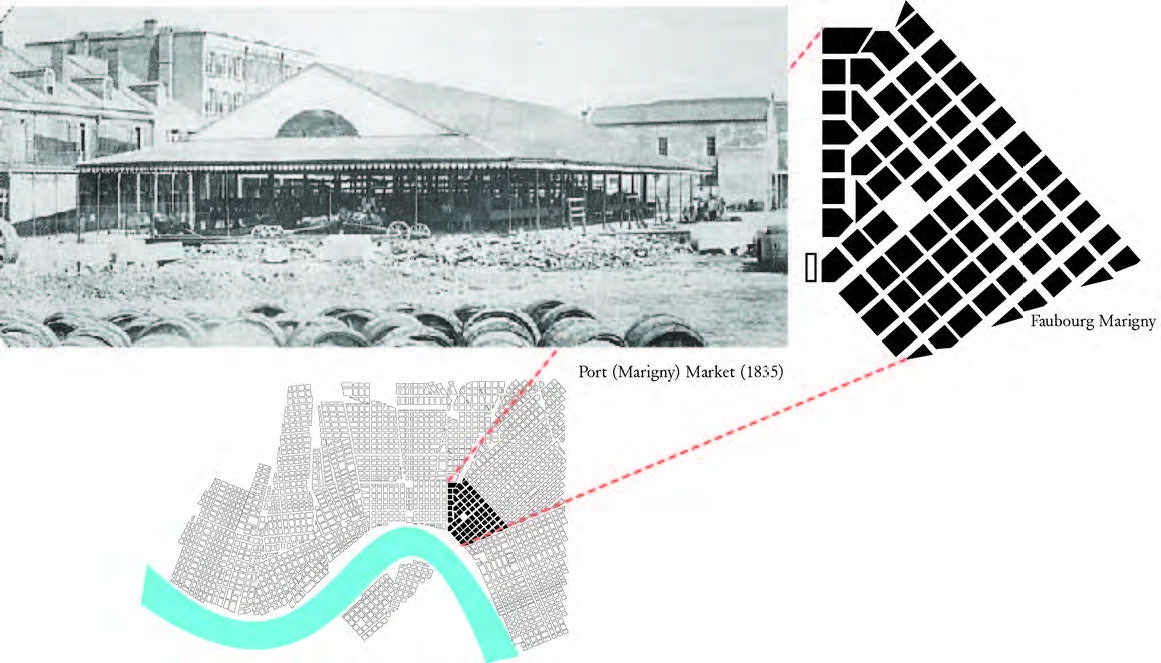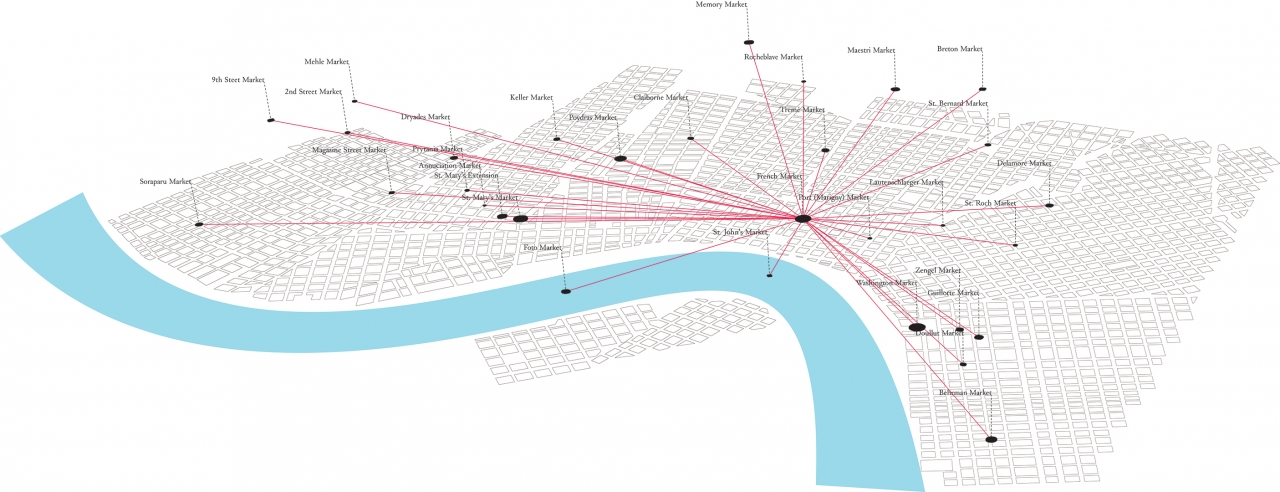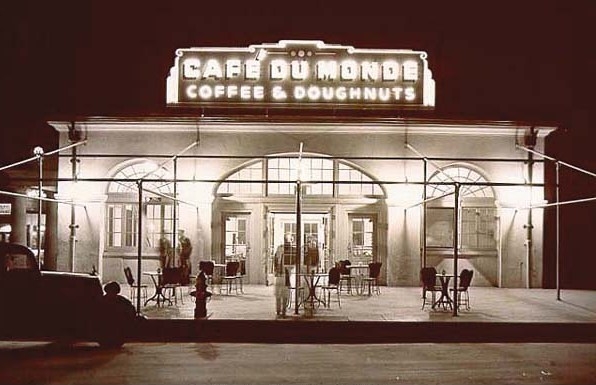Jessica Myers, The Marketplace and the Metropolis
Faculty Advisors: Profs. M. Chistine Boyer; Enrique Walker
When a city begins as a market, its politics, behaviors, and culture begin in the market as well. Unlike many other big river cites like Paris, Calcutta, or Cairo rather than being situated on the river, New Orleans was founded at the end a river, at the mouth of the great Mississippi. Like New York and Shanghai, New Orleans’ became a natural a catchall for immigrants, merchants, and vagabonds alike. Food markets were the gates to that catchall. As in any city with a river as its major artery, New Orleans depended on two things: transit and trade. The ports and the markets were The Crescent City’s lifeblood often times at the expense of all else. The municipal food market spawned New Orleans’ center city. It was the epicenter of its urban fabric, its successes or failures often ensuring the city’s ability to grow.
My thesis is organized around the public food market life cycle that historian Robyn Metcalfe establishes in her book Meat, Commerce and the City, a study of the removal of London’s Smithfield meat market. Each chapter enters the life of New Orleans’ market network at crucial point in the cycle. In chapter one we follow the city’s struggle to install a market and formalize itself as a municipality. The next chapter focuses on the market’s establishment and expansion in the city and discusses the ways in which this expansion extended from contention between immigrants and New Orleans’ natives. The last chapter details the market’s slow decline as it became less and less relevant to the way New Orleanians shopped and used public space. The thesis concludes with current uses of what remains of the public market network in New Orleans and proposes an additional step to Metcalfe’s market life cycle.






